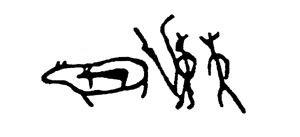Part 8 notes and references
References, sources and further reading
Frequently updated.
You are welcome to contact us with enquiries, comments and information, at post@cosmicelk.net
Times and dates. Note on calendar.
Two starting dates to the year: Christmas and New Year celebrations are at the same time as now, with New Year on 1st January. But they also started the New Year at around the Spring Solstice or Easter or 25th March, and this has survived today as using a year beginning early April for Income Tax etc. To attempt to avoid confusion shall try to calculate dates of birth, events, etc. from the January 1st starting date. Another possible confusion is that the calendar was a bit out of sync. Getting it right was to become an obsession in the 16th century. Especially to the Vatican as it meant their saints days etc. were drifting. Hence the Vatican observatory. And improved observations of the universe finding out that the Earth was far from being the centre around which less important objects revolved. This helped to further weaken the control of the Vatican. Hence the caution of Copernicus in publishing his results, and the persecution of scientists like Bruno and Galileo, later in the 16th century.
Tudor claim to the throne:
Was challenged, since it was won by military force, deception, strategy, and plotting especially by Henry Tudor's mother, Margaret.
Margaret Beaufort's useful husbands
1. John de la Pole. 1450. Margaret was 6, her husband 7. They separated in 1453.
2. Edmund Tudor. 1455. Margaret was 12. This husband died soon after marriage. Margaret was pregnant with Henry Tudor, her first and only child.
3. Henry Stafford. 1458-1471. Chosen by Margaret and her brother-in-law, Jasper Tudor, who as Henry Tudor's uncle looked after him as his guardian when Stafford died.
4. Thomas Lord Stanley, 1st Earl of Derby. A Yorkist, which helped Margaret ingratiate herself with Edward IV.
5. When Richard III became king, Margaret conspired with Elizabeth Woodville, widow of Edward IV, to marry her son Henry Tudor to Elizabeth's eldest daughter also Elizabeth, and heir to the throne after her two brothers. Who were to disappear in the Tower of London. It is possible that Margaret had something to do with that, since her husband had access to the Tower.
The wedding of Elizabeth and Henry, united York and Lancaster into the Tudor dynasty after the defeat and death of Richard III. And the white rose (one of the emblems of York the other being the sun) with the red rose (just invented) of the Tudors. Margaret now signed her name Margaret R. And later expected to rule in her grandson's minority. Which did not last long, her grandson Henry VIII had other plans.
More on fate of Richard III and the "princes in the Tower"
In 2013, Richard III's remains were discovered in an excavation by the University of Leicester, of the remains of the chapel of Grey Friars, buried under a car park. His identity was confirmed with the help of the dna of relatives' descendents, and his horrible death by several blows, revealed in the examination of his remains. Also his state of health. He had intestinal worms. He did have scoliosis (a curved spine which makes one shoulder higher than the other - I have the same). An investigation using a current sufferer in his late 20s showed that with the type of saddle they used then, riding would not have been a problem. He was quite good looking. He had to be very strong to fight in armour. And from the evidence of the attacks on him, must have been very brave at the end.
They could not get DNA from his son's grave because his tomb at Sheriffhutton is empty. His son's remains have not been found. There is suspicion that Margaret Beaufort had arranged for him to be poisoned. Certainly she seems likely to be implicated in the imprisonment of the two sons of Edward IV, and the son of the Duke of Clarence - and their subsequent disposal. She had access to the Tower through her husband. This woman made sure her own son became King of England (and she was in power).
Part of the mystery was that no one impersonated Edward, who is still known as Edward V. The boys were frequently visited by the doctor, John Argentine, who was treating Edward for a diseased jaw. Because of this condition he became increasingly ill, and the boys were seen less and less playing outside. It is unlikely that Edward would have survived under any circumstances with this, as he would not be able to eat.
This must have been known to those that set up "pretenders" (or supported the real princes?), who were either claimed to be the Earl of Warwick or Richard of York. Richard of York the younger brother, may have really been "Perkin Warbeck" who was recognised as her nephew by Richard's aunt (his father's sister) and you can see a resemblance to Edward IV in the surviving portrait of him - a sketch of the original which was destroyed. He had a scar across one eye that was damaged apparently when they were attacked and he was helped to escape, so perhaps his story was true. One of the best books on this is "Perkin a story of deception" by Ann Wroe, 2003 which also shows how desperate Henry VII was to find evidence to show Richard was an imposter with a funny name. An alternative career for Richard is in "The Lost Prince" by David Baldwin. Much the same mystery surrounds the earlier pretender, claimed to be Edward, Earl of Warwick, who Henry VII insisted was called Lambert Simnel. And did not put him to death, but put him to work in his kitchens. He later become a falconer. Henry VII produced briefly a boy he claimed to be the real Earl of Warwick who gave the impression of being very dim (not like the real Earl of Warwick) and did not emerge again from his prison in the Tower of London until taken out to have his head cut off.
There has been a number of bones found in and around the Tower of London. Many attributed to the lost princes. However using modern methods to test the claims has so far not been allowed.
Ferdinand and Isabella were not going ahead with the marriage of their daughter to Henry VII's son until Henry VII had eliminated all potential contenders for his throne. In the end Henry VII had both "Perkin" and Warwick executed.
Last meeting in 1506 between sisters Juana, now Queen, and Katherine, Princess of Wales. Details in Spain, January 1506, Calendar of State Papers, Spain, Volume 1, 1485-1509, 1862 p.379. https://www.british-history.ac.uk/cal-state-papers/spain/supp/vols1-2: The fate of Katherine of Aragon's oldest sister Juana. The imprisonment of Juana the rightful Queen, has in more recent years attracted books, both history and novels, and academic papers. The proposal of Henry VII in 1507 to the recently widowed Queen Juana, in British History Online. Calendar of State Papers, Spain: Supplement to Volumes 1 and 2.
Henry VII's eldest son was not by his wife but by a girlfriend he had earlier, when he lived in Brittanny. Their son was Roland de Velville. He was knighted by his father, and married a Welsh girl, Agnes ferch Gwilvym Fychan. They had children, and lived in Wales where Roland was Constable of Beaumaris Castle, Anglesey.
Dates of births:
Dates of births of girls are rarely recorded, as no legal obligation to register all births until 1538. Frequently only the date of birth of boys are usually recorded presumably as the oldest would inherit property and titles. So although their family would remember their birthday when they lived, it is rare that a record of the date of birth before that date, survives to help historians.
Hence uncertainty about Elizabeth Blount's age - but it seems she was still in her early teens or even younger when Henry VIII was first attracted to her. As she appears to be the second oldest, she is likely to have been born about 1503, making her about 16 when she gave birth to Henry VIII's son.
Boleyns
Dates of birth for Mary and Anne Boleyn, who followed on from Elizabeth Blount as Henry VIII's mistresses are also unrecorded, but would have to be between 1500 and 1505, since their parents were married in 1499, said they had a child each year, and George is known to have been the youngest so born in 1505. There were 5 children born, but two boys died young. Anne Boleyn seems have been the eldest, as she already had a marriage arranged for her (to her cousin James Butler). This was a common arrangement since the eldest daughter would be the heiress if no brothers survived. Elizabeth Blount's elder sister also had a marriage already arranged.
Anne Boleyn was the first to be placed by her father, for her employment and education - and it was abroad, with the Duchess Margarete, Regent of the Netherlands. Mary Boleyn appears have joined the court of Queen Katherine and then the service of Princess Mary, the King's sister, about a year later (1513).
The Regent refused to let Anne go when her father asked if she could join her sister in France as maid of honour to the King's sister Mary. So she was educated in what is now Belgium, not France. And became fluent in French in Belgium, not France. She was however in France in 1522, when she was waiting for a passage in a boat home. It appears she could have been staying at Briis-sous-Forges, in a castle which belonged to a relative of her father, Philippe de Moulin de Brie. (A tower remains). This was well positioned for access to some of the various palaces occupied by the King and Queen, and would have been convenient for Thomas Boleyn, on his frequent trips to France. The belief that Anne was educated at the Court of Queen Claude does not appear to be backed by actual evidence. (See books by Sylwia Zupanec and Eric Ives listed further on).
Although no real evidence exists, the story that Anne Boleyn was at the court of Queen Claude persists. It is largely based on earlier histories such as the work of Agnes Strickland in the 19th century. On page 385 (2nd edition) she states about Anne Boleyn:
"While at the French court her costume was a cap of velvet, trimmed in points, a little gold bell hanging from each point; a vest of the same material with silver stars, a jacket of watered silk with large hanging sleeves that almost concealed her hands, and a skirt to match. Her feet were encased in blue velvet slippers, with a strap across the instep, fastened with a diamond star. Her hair fell in ringlets about her shoulders."
Agnes Strickland's books were for general reading rather than serious history, illustrated books with pictures. Not clear where Miss Strickland obtained all her information. It is hard to imagine the straight black hair of Anne Boleyn in ringlets and under a pointy cap with bells on, especially as she does not appear to have ever been at the court of Queen Claude, who died 20th July 1524. In fact when Anne accompanied Henry VIII to Calais, to meet the King and his sons, his sisters, and his second wife, Eleanor of Austria, refused to meet Anne. His sister-in-law suggested that they send one of the King's mistresses in her place. Since none of the ladies of the French court were prepared to meet Anne Boleyn, she had to remain in Calais. That also indicates she had not been at the French court, as she would have made at least some friends there who might have wanted to meet her or that she wanted to meet, but there appears to be no one.
The Regent who had been twice widowed and had lost her only child, took a personal interest in the progress of her wards, and was an example to them of a powerful and independent woman. Anne had acquired an excellent education, and an independence of attitude, during her stay with the Regent, both being part of her attraction for Henry VIII. (At least until it clashed with his own behaviour, actions and ideas).
And another one not in France:
Jane Seymour's date of birth, and that of her brother needed working out from all the different versions. If she had gone with Princess Mary to France as traditionally asserted by 19th century historians, then she would have been rather too old to interest Henry VIII as a replacement for Anne Boleyn, since he wanted more children. He was not going marry a woman older than the one he had already. It was actually Jane's brother Edward Seymour, then 14, that went to France with Princess Mary as one of her pages. So Edward must have been older than Jane. He was in fact the eldest son. Although her date of birth is unknown, some writers put Jane's age at 29 when she died in 1537, since 29 women were in the procession at her funeral.
Jane Seymour and William Dormer fell in love and wanted to marry. 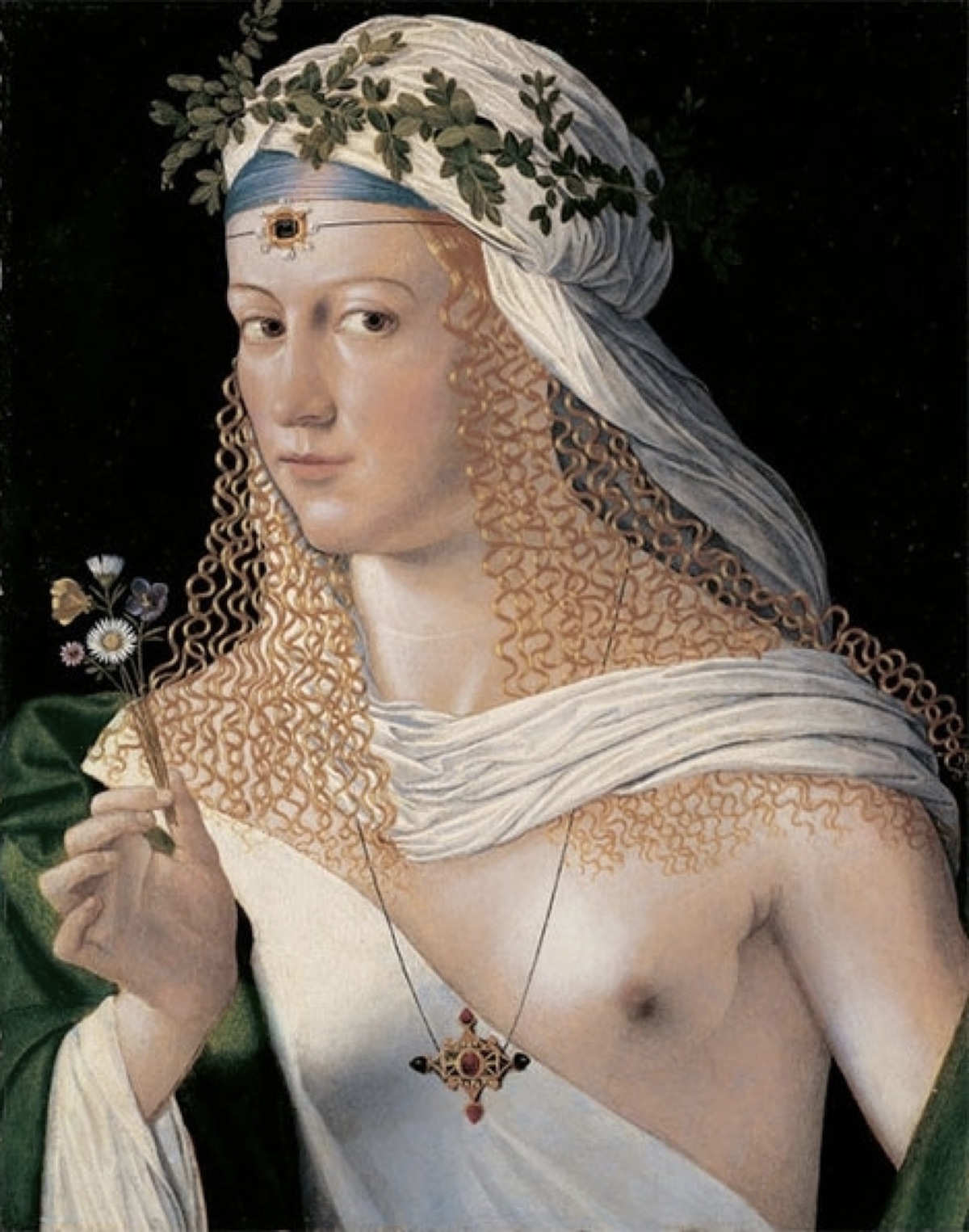 This portrait was painted with egg tempera on poplar wood, a technique still in use in Italy, Greece and Russia in the early 16th century. In North West Europe by then, artists (like Holbein) preferred to use oil paints. The date, artist and sitter are still not known. It was once thought (wrongly) to be of Lucretia Borgia, daughter of Pope Alexander VI. Others (also wrongly) thought it represented the goddess Flora. It has been dated about c. 1515-1520, the date is thought to be very likely, 1518.
This portrait was painted with egg tempera on poplar wood, a technique still in use in Italy, Greece and Russia in the early 16th century. In North West Europe by then, artists (like Holbein) preferred to use oil paints. The date, artist and sitter are still not known. It was once thought (wrongly) to be of Lucretia Borgia, daughter of Pope Alexander VI. Others (also wrongly) thought it represented the goddess Flora. It has been dated about c. 1515-1520, the date is thought to be very likely, 1518. In July 1522 John Creke a merchant tailor in Bilbao sent a letter to Cromwell in Latin, addressing him as (translated)"the dearest man to be found in the world" and continues "the great love that has been between us cannot go from my memory, the affection was so perfect....." "My heart mourns for your company and Mr. Wodall's (Nicolas Udall) as ever it did for men"....
In July 1522 John Creke a merchant tailor in Bilbao sent a letter to Cromwell in Latin, addressing him as (translated)"the dearest man to be found in the world" and continues "the great love that has been between us cannot go from my memory, the affection was so perfect....." "My heart mourns for your company and Mr. Wodall's (Nicolas Udall) as ever it did for men"....  This chart shows how the climate cooled, so that by the 16th century the Arctic, which had been accessible to northern shipping to the extent that there were Scandinavian colonies on the north coast of Russia and Siberia (Mangazeya) and in Newfoundland, (and regular shipping from Spain and France for fishing and trade) was remembered, but found to be no longer so easily accessible. Grape vines in England had been used to produce local wines good enough for export. As we have seen, in 1528 the wine produced was undrinkable. (British wine despite efforts has not been very successful since). By the end of 1536, the Thames had frozen over so Henry VIII with latest Queen, Jane, who would normally have gone in procession down the Thames to Greenwich by barge, rode there crossing the river on the ice. On the bright side, by the end of the 17th century there was no more plague and malaria in northern Europe.
This chart shows how the climate cooled, so that by the 16th century the Arctic, which had been accessible to northern shipping to the extent that there were Scandinavian colonies on the north coast of Russia and Siberia (Mangazeya) and in Newfoundland, (and regular shipping from Spain and France for fishing and trade) was remembered, but found to be no longer so easily accessible. Grape vines in England had been used to produce local wines good enough for export. As we have seen, in 1528 the wine produced was undrinkable. (British wine despite efforts has not been very successful since). By the end of 1536, the Thames had frozen over so Henry VIII with latest Queen, Jane, who would normally have gone in procession down the Thames to Greenwich by barge, rode there crossing the river on the ice. On the bright side, by the end of the 17th century there was no more plague and malaria in northern Europe.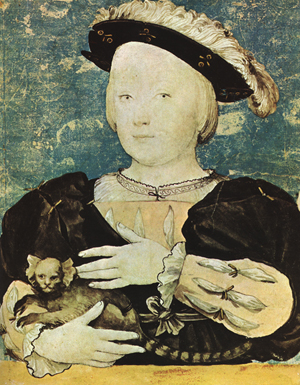 Holbein visited England again in 1533, when he did his signature masterpiece "The Ambassadors", but did not become the King's painter until 1536, when he did the iconic portrait of Henry VIII. Also drawings survive of Duchess of Richmond, and Earl of Surrey, but not of Richmond. Although may be unidentified - it does look like any portraits could have been destroyed on the orders of Henry VIII.
Holbein visited England again in 1533, when he did his signature masterpiece "The Ambassadors", but did not become the King's painter until 1536, when he did the iconic portrait of Henry VIII. Also drawings survive of Duchess of Richmond, and Earl of Surrey, but not of Richmond. Although may be unidentified - it does look like any portraits could have been destroyed on the orders of Henry VIII.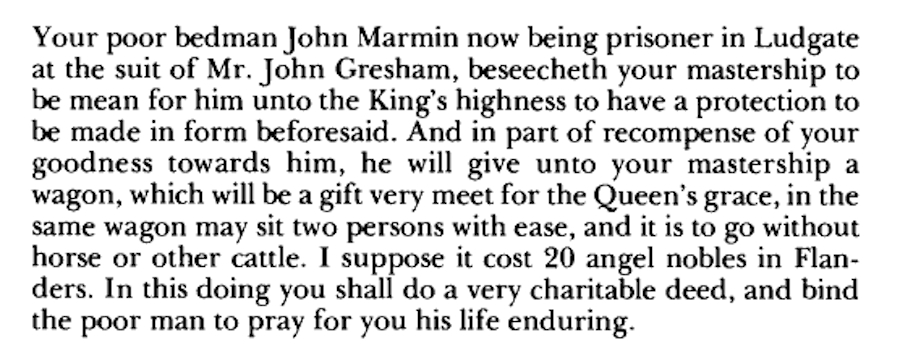 Anne had the opportunity to own and drive a car after she was Queen, when Henry VIII was offered one for her, as a reward for payment of a debt. (Original PRO 163/15/36, this came from paper: The Invention of a Self-Propelled Vehicle in the 16th century, by James Alsop, 1981.) Anne Boleyn may have been the first woman driver in England.
Anne had the opportunity to own and drive a car after she was Queen, when Henry VIII was offered one for her, as a reward for payment of a debt. (Original PRO 163/15/36, this came from paper: The Invention of a Self-Propelled Vehicle in the 16th century, by James Alsop, 1981.) Anne Boleyn may have been the first woman driver in England.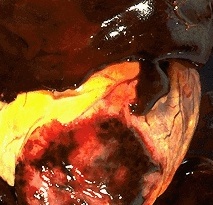 Information on this comes from the autopsy. The interpretation of it was assisted by the research and personal experience of Mervyn Hobden.
Information on this comes from the autopsy. The interpretation of it was assisted by the research and personal experience of Mervyn Hobden. 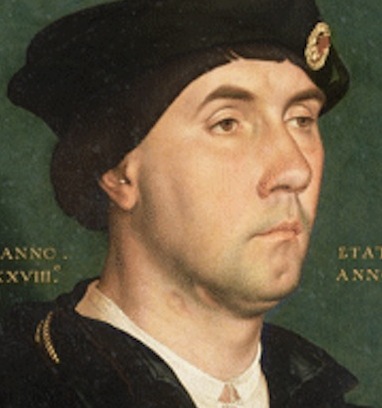
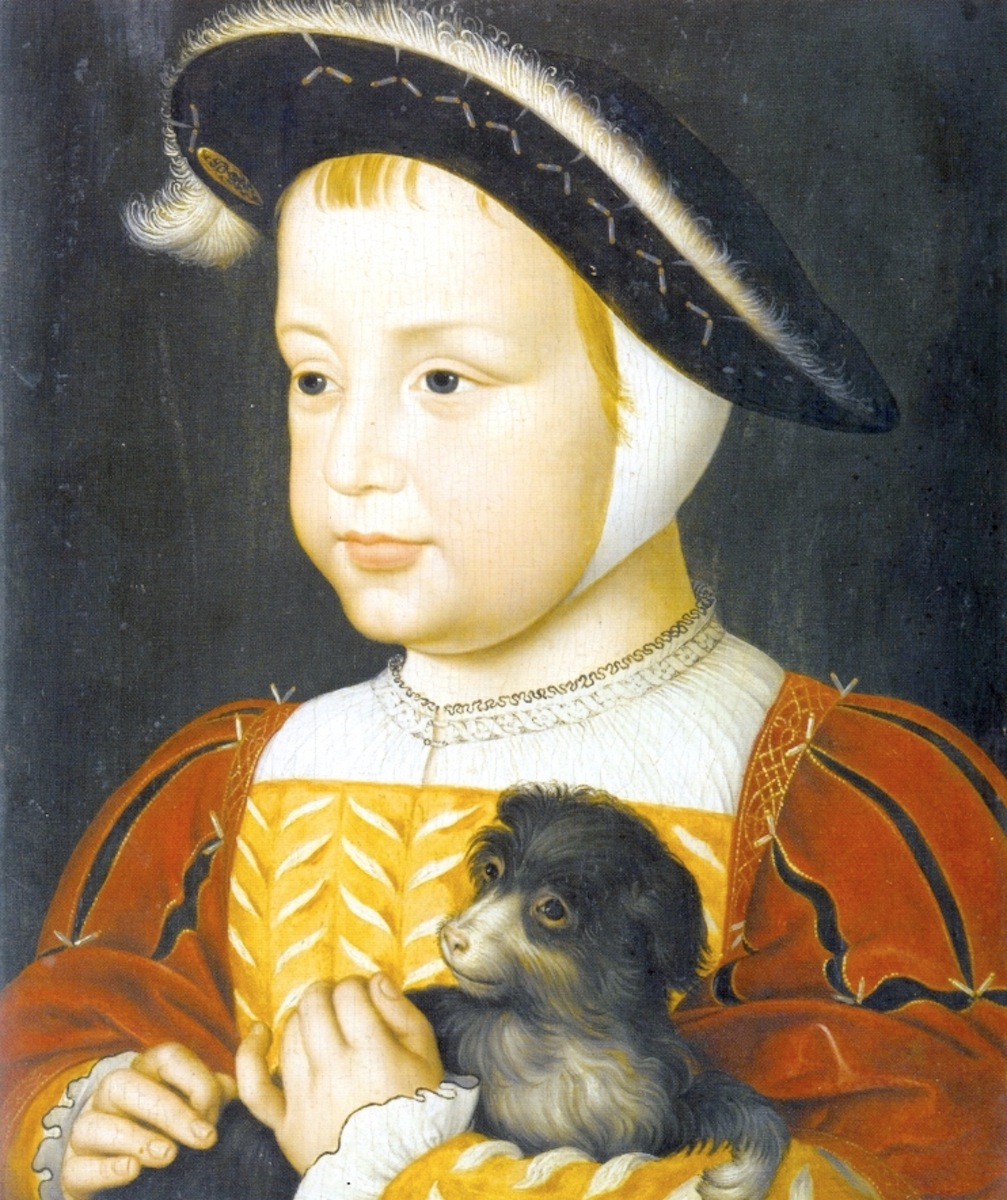
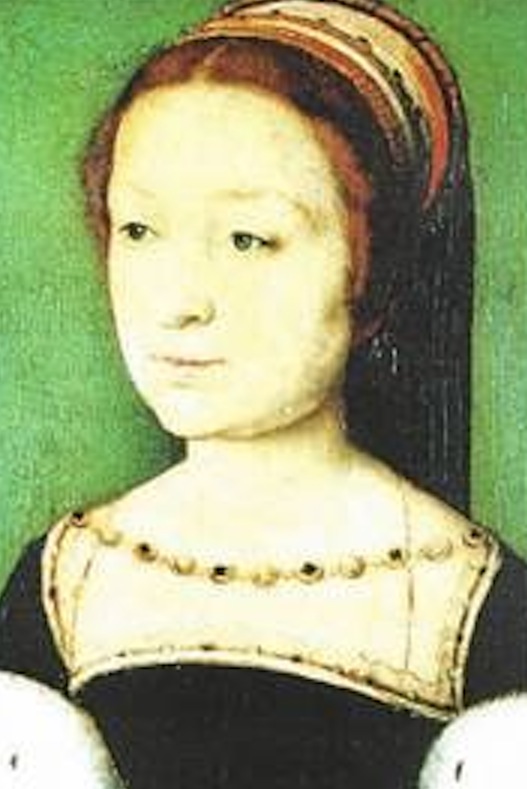
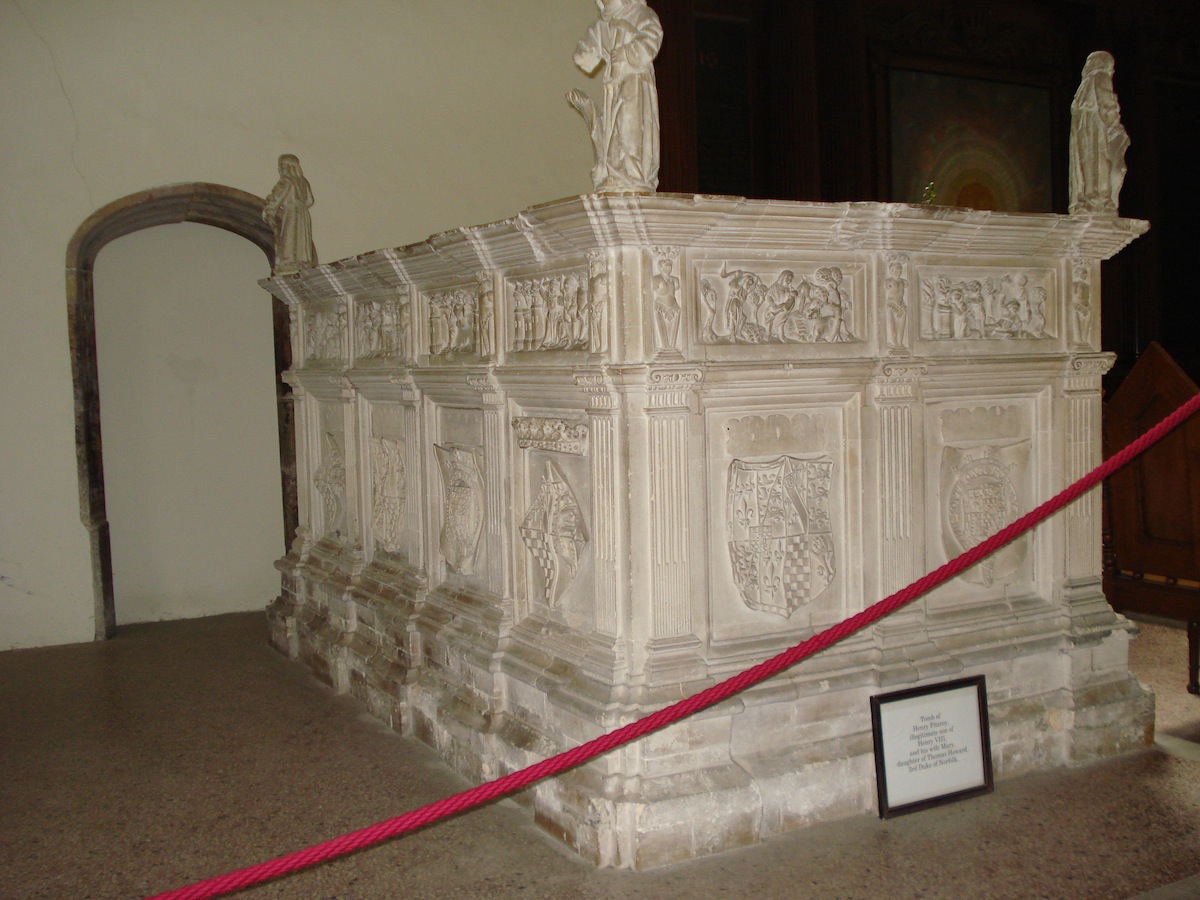 When Thetford Priory was dissolved two years after Henry Fitzroy was buried there, most of the Howard family coffins but not the actual tombs, were transferred to St. Michael's Church, Framlingham, Suffolk.
When Thetford Priory was dissolved two years after Henry Fitzroy was buried there, most of the Howard family coffins but not the actual tombs, were transferred to St. Michael's Church, Framlingham, Suffolk. 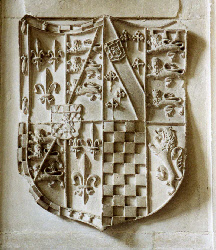 Richmond's later tomb or memorial to him and his wife, can be seen near other Howard memorials by the side of the altar. It is a carved stone sarcophagus decorated with biblical scenes, and shields and lozenges for male and female coats of arms to be added as appropiate in this case, Richmond's in the shields and his wife Mary's in the lozenges. Or combined as was done for married couples as in this picture showing their combined shield on their tomb - Richmond's has the "bar sinister" across it showing he was illegitimate.
Richmond's later tomb or memorial to him and his wife, can be seen near other Howard memorials by the side of the altar. It is a carved stone sarcophagus decorated with biblical scenes, and shields and lozenges for male and female coats of arms to be added as appropiate in this case, Richmond's in the shields and his wife Mary's in the lozenges. Or combined as was done for married couples as in this picture showing their combined shield on their tomb - Richmond's has the "bar sinister" across it showing he was illegitimate.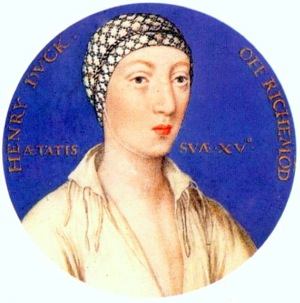 Here is a copy of a miniature in the Queen's collection at Windsor. Lettering on the original says in capitals: "HENRY DUCK OFF RICHMOD" "AETIS SVA XV".
Here is a copy of a miniature in the Queen's collection at Windsor. Lettering on the original says in capitals: "HENRY DUCK OFF RICHMOD" "AETIS SVA XV".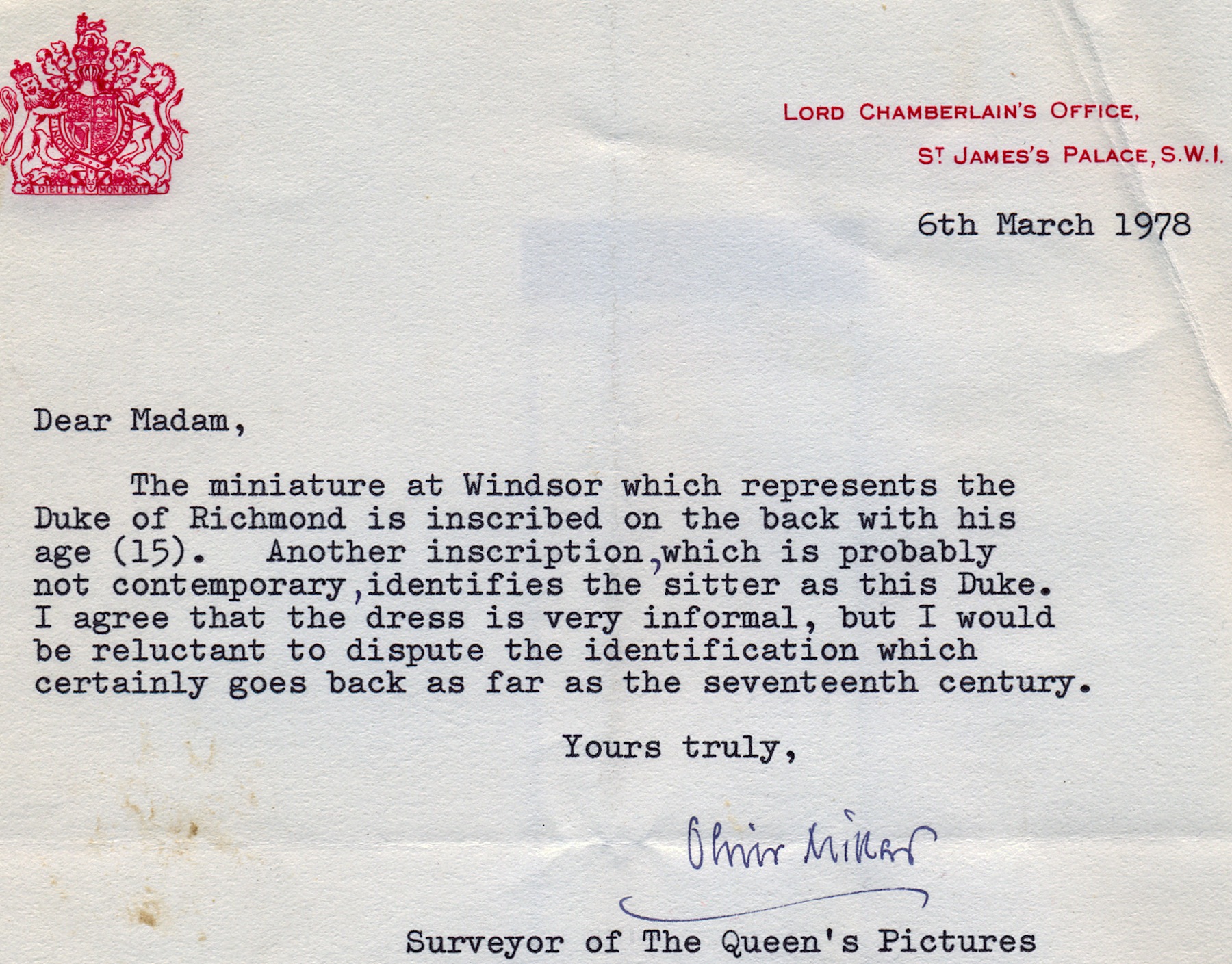 When I enquired about this, one reply was from
When I enquired about this, one reply was from 